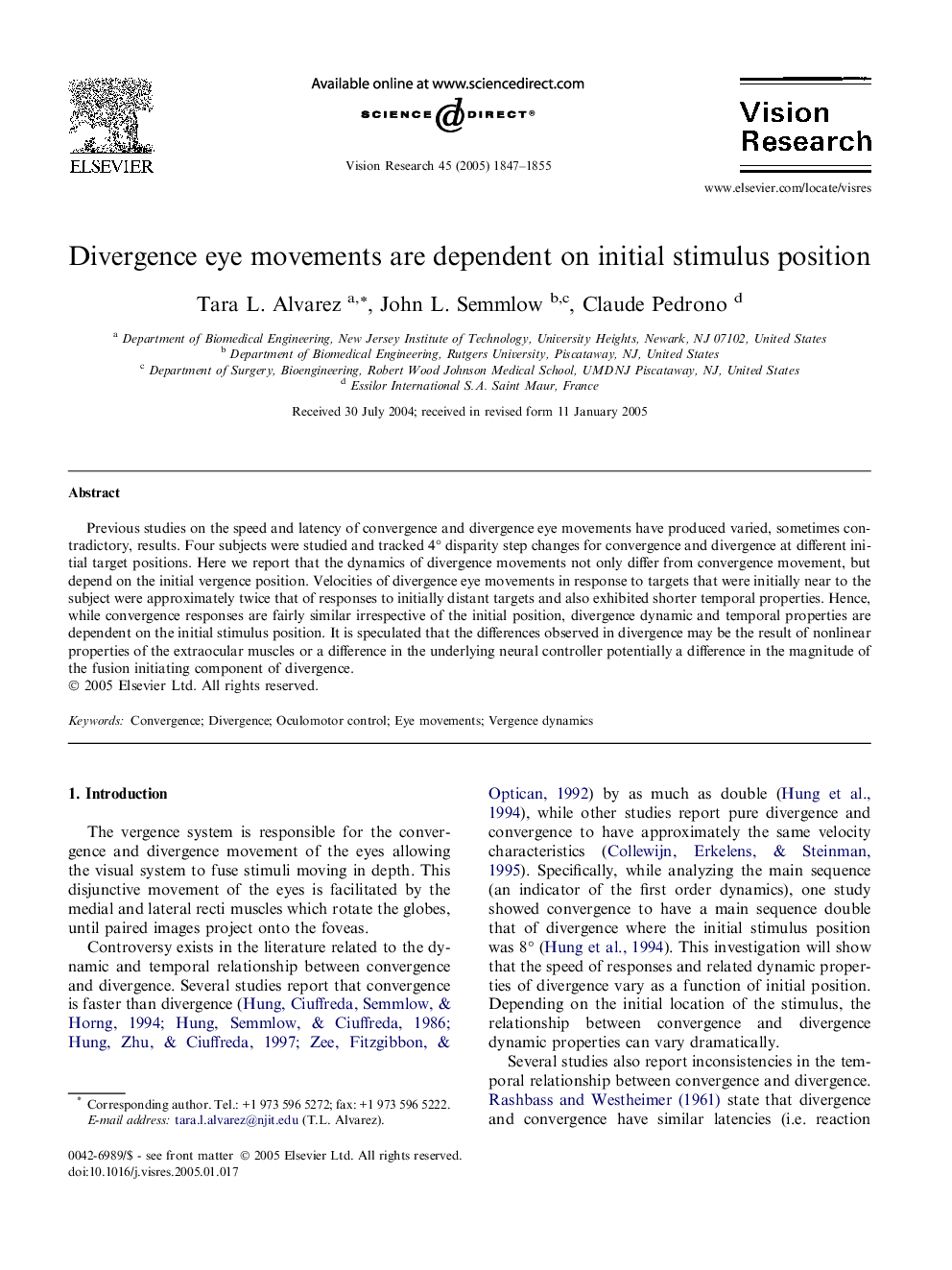| Article ID | Journal | Published Year | Pages | File Type |
|---|---|---|---|---|
| 9348420 | Vision Research | 2005 | 9 Pages |
Abstract
Previous studies on the speed and latency of convergence and divergence eye movements have produced varied, sometimes contradictory, results. Four subjects were studied and tracked 4° disparity step changes for convergence and divergence at different initial target positions. Here we report that the dynamics of divergence movements not only differ from convergence movement, but depend on the initial vergence position. Velocities of divergence eye movements in response to targets that were initially near to the subject were approximately twice that of responses to initially distant targets and also exhibited shorter temporal properties. Hence, while convergence responses are fairly similar irrespective of the initial position, divergence dynamic and temporal properties are dependent on the initial stimulus position. It is speculated that the differences observed in divergence may be the result of nonlinear properties of the extraocular muscles or a difference in the underlying neural controller potentially a difference in the magnitude of the fusion initiating component of divergence.
Related Topics
Life Sciences
Neuroscience
Sensory Systems
Authors
Tara L. Alvarez, John L. Semmlow, Claude Pedrono,
